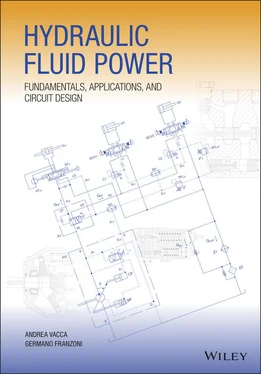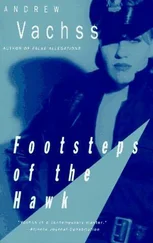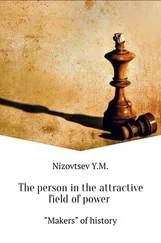Library of Congress Cataloging‐in‐Publication Data
Names: Vacca, Andrea, author. | Franzoni, Germano, author.
Title: Hydraulic fluid power : fundamentals, applications, and circuit design / Andrea Vacca, Maha Fluid Power Research Center, Purdue University Germano Franzoni, Global Mobile Systems, Parker Hannifin.
Description: First edition. | Hoboken, NJ : Wiley, [2021] | Includes bibliographical references and index.
Identifiers: LCCN 2020025914 (print) | LCCN 2020025915 (ebook) | ISBN 9781119569114 (cloth) | ISBN 9781119569138 (adobe pdf) | ISBN 9781119569107 (epub)
Subjects: LCSH: Fluid power technology. | Hydraulic machinery.
Classification: LCC TJ840 .V33 2021 (print) | LCC TJ840 (ebook) | DDC 621.2–dc23
LC record available at https://lccn.loc.gov/2020025914
LC ebook record available at https://lccn.loc.gov/2020025915
Cover Design: Wiley
Cover Images: Images designed by Andrea Vacca and Germano Franzoni
The idea for this textbook came to the mind in the summer of 2003. At that time, as junior researchers at the University of Parma in Italy, the authors were tasked to learn more about hydraulic technology and gather material for a new course to be added to the mechanical engineering program.
Emilia Romagna in northern Italy, where Parma is located, is home to many proficient hydraulics manufacturers. To better connect with the surrounding industries, the Engineering Department of the University of Parma began teaching and doing research on hydraulics, a topic that was missing in the course offering.
The authors were challenged with preparing a material suitable for a college‐level class and at the same time advertising the research capabilities of the university laboratory among the local fluid power companies.
After spending several hours online and in libraries searching for educational materials in fluid power, the authors immediately realized the absence of well‐structured textbooks explaining the state‐of‐the‐art of hydraulic technology. At the same time, by also interviewing hydraulic engineers in the workforce, they discovered how most knowledge on hydraulics seemed to belong to a restricted elite who learned through years of experience. This knowledge had been passed along within the same companies as a proprietary know‐how, a kind of tribal knowledge.
Thanks to the “freedom of learning” allowed to young scholars in Italy, the authors started researching through existing literature and contacting Italian and international academic professors. Each book they had the chance to read and every class they could attend seemed to be focused only on certain aspects of hydraulics. Therefore, the authors started putting together different bits and pieces of a large collage, spending countless hours researching and animatedly debating on how to connect the dots.
The more their work was expanding, the more passionate they had become about hydraulics or better yet, “hydraulic fluid power.” They quickly realized how this discipline has a huge technical implication and it often falls under the radar of many engineering departments. But it also is a very complex technology, which embraces bits and pieces of several other disciplines: structural mechanics, fluid mechanics, heat transfer, electrical engineering, control systems, product design, and others.
The authors also realized the difficulty to teach hydraulics, and the lack of structured teaching material was also probably the root cause for the decline in academic interest for fluid power. In fact, universities preferred to focus the attention on other technologies such as electronic controls and electric drives, which are more structured disciplines and benefit from the abundance of educational materials.
The idea for this textbook came to the mind in the summer of 2003. At that time, as junior researchers at the University of Parma in Italy, the authors were tasked to learn more about hydraulic technology and gather material for a new course to be added to the mechanical engineering program.
Emilia Romagna in northern Italy, where Parma is located, is home to many proficient hydraulics manufacturers. To better connect with the surrounding industries, the Engineering Department of the University of Parma began teaching and doing research on hydraulics, a topic that was missing in the course offering.
The authors were challenged with preparing a material suitable for a college‐level class and at the same time advertising the research capabilities of the university laboratory among the local fluid power companies.
After spending several hours online and in libraries searching for educational materials in fluid power, the authors immediately realized the absence of well‐structured textbooks explaining the state‐of‐the‐art of hydraulic technology. At the same time, by also interviewing hydraulic engineers in the workforce, they discovered how most knowledge on hydraulics seemed to belong to a restricted elite who learned through years of experience. This knowledge had been passed along within the same companies as a proprietary know‐how, a kind of tribal knowledge.
Thanks to the “freedom of learning” allowed to young scholars in Italy, the authors started researching through existing literature and contacting Italian and international academic professors. Each book they had the chance to read and every class they could attend seemed to be focused only on certain aspects of hydraulics. Therefore, the authors started putting together different bits and pieces of a large collage, spending countless hours researching and animatedly debating on how to connect the dots.
The more their work was expanding, the more passionate they had become about hydraulics or better yet, “hydraulic fluid power.” They quickly realized how this discipline has a huge technical implication and it often falls under the radar of many engineering departments. But it also is a very complex technology, which embraces bits and pieces of several other disciplines: structural mechanics, fluid mechanics, heat transfer, electrical engineering, control systems, product design, and others.
The authors also realized the difficulty to teach hydraulics, and the lack of structured teaching material was also probably the root cause for the decline in academic interest for fluid power. In fact, universities preferred to focus the attention on other technologies such as electronic controls and electric drives, which are more structured disciplines and benefit from the abundance of educational materials.
The idea for this textbook came to the mind in the summer of 2003. At that time, as junior researchers at the University of Parma in Italy, the authors were tasked to learn more about hydraulic technology and gather material for a new course to be added to the mechanical engineering program.
Emilia Romagna in northern Italy, where Parma is located, is home to many proficient hydraulics manufacturers. To better connect with the surrounding industries, the Engineering Department of the University of Parma began teaching and doing research on hydraulics, a topic that was missing in the course offering.
The authors were challenged with preparing a material suitable for a college‐level class and at the same time advertising the research capabilities of the university laboratory among the local fluid power companies.
After spending several hours online and in libraries searching for educational materials in fluid power, the authors immediately realized the absence of well‐structured textbooks explaining the state‐of‐the‐art of hydraulic technology. At the same time, by also interviewing hydraulic engineers in the workforce, they discovered how most knowledge on hydraulics seemed to belong to a restricted elite who learned through years of experience. This knowledge had been passed along within the same companies as a proprietary know‐how, a kind of tribal knowledge.
Читать дальше












